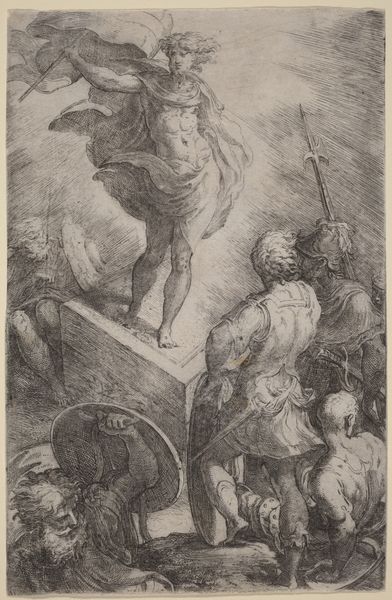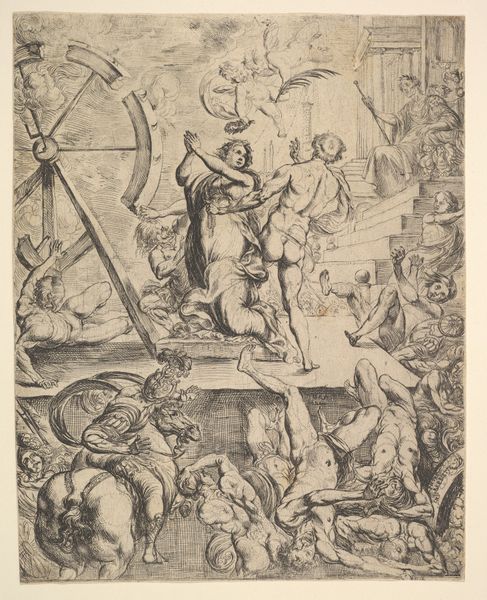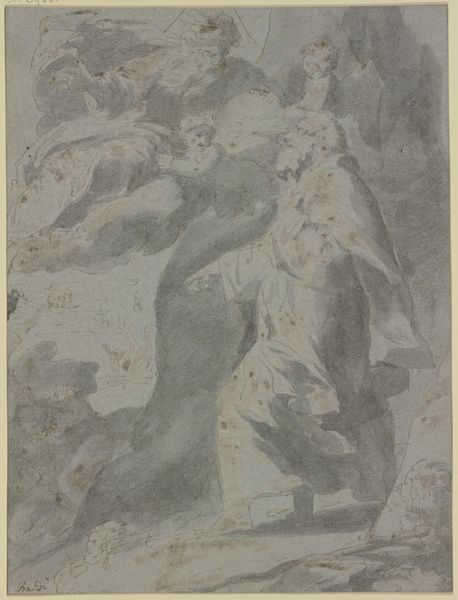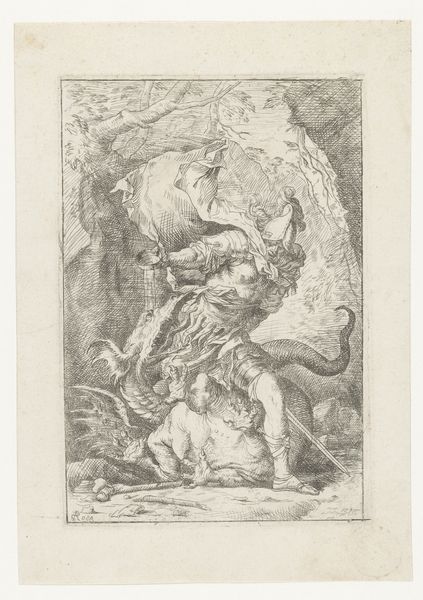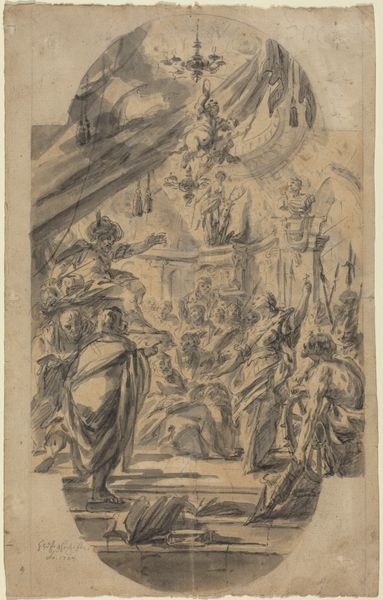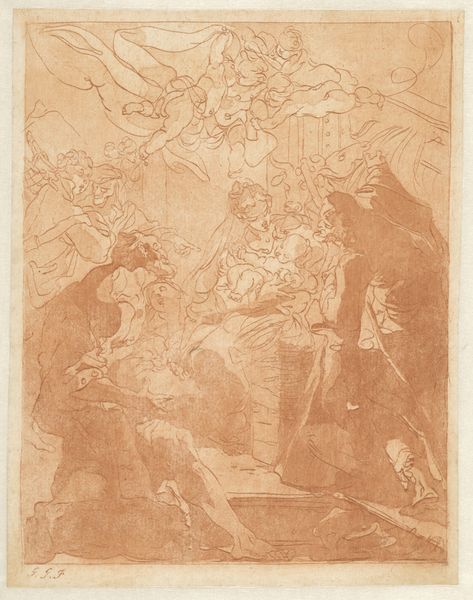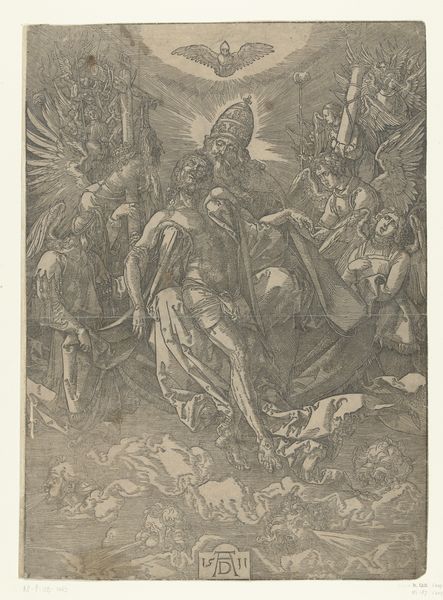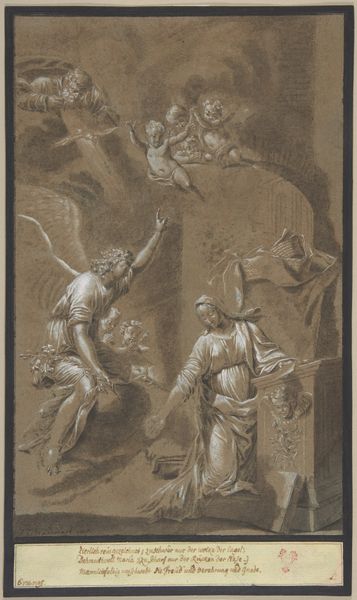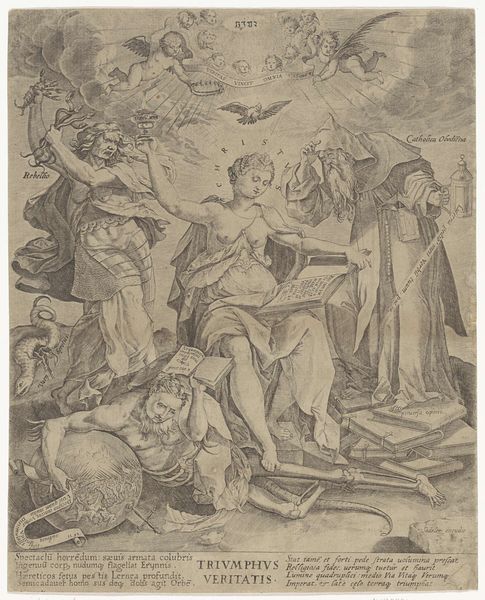
drawing, print, etching, engraving
#
drawing
#
allegory
#
narrative-art
# print
#
etching
#
mannerism
#
figuration
#
soldier
#
history-painting
#
italian-renaissance
#
engraving
Dimensions: sheet: 8 3/8 x 5 5/16 in. (21.2 x 13.5 cm)
Copyright: Public Domain
Parmigianino made this image of the Resurrection as an etching, a printmaking technique using acid to create lines in a metal plate. The image presents a vision of Christ rising from the tomb, while Roman soldiers recoil in terror. Parmigianino was working in Italy in the 1520s and 30s. The visual codes here are rooted in the religious culture of the time. But they also show the influence of the classical world. Note how Christ's body is idealized, like that of an ancient Greek god. We might ask, what is the relationship between the classical past and the Christian present in the cultural imagination of the Italian Renaissance? Also, remember that as an artwork designed to be reproduced, prints had a key social function. Unlike paintings made for wealthy patrons, prints allowed artists to circulate their ideas among a much wider public. Art historians use a range of documents to understand the social function of art. These may include letters, contracts, and inventories, as well as the prints themselves. The meaning of any work of art is contingent on its historical and institutional context.
Comments
No comments
Be the first to comment and join the conversation on the ultimate creative platform.
